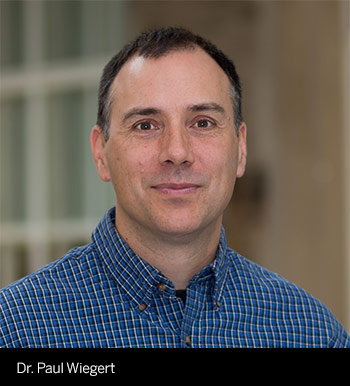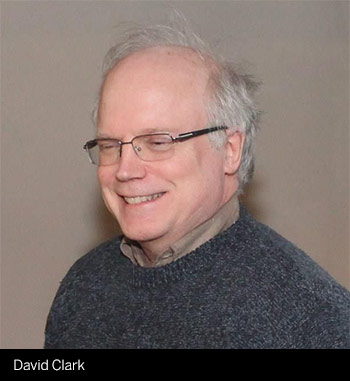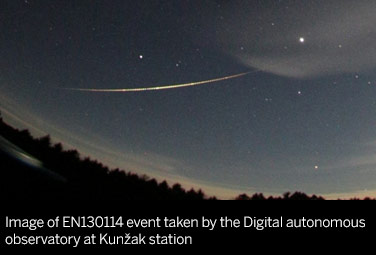Mini-moons and shooting stars: how lethal are our skies?
One day about 66 million years ago, life thrived on earth and all was fine.
And then a ten-kilometre wide asteroid hit what is now Mexico’s Yucatan Peninsula, triggering the rapid, planet-wide extinction of most of the world’s plants and animals.
And it could happen again.
In February this year, there was a news story about a bus driver in India being killed by a meteor. The truth of the story is unclear, though certainly, death from the sky is always possible.
 At Western University, David Clark and Dr. Paul Wiegert are part of a team looking at Temporarily Captured Orbiters, also known as “TCOs” or “mini-moons”. Clark is a Geophysics PhD candidate and Wiegert is an Associate Professor of Physics and Astronomy and the Director of Graduate Programs at the Centre for Planetary Science and Exploration (CPSX). Their research into the identification and tracking of mini-moons could lead to ways of protecting ourselves from space projectiles.
At Western University, David Clark and Dr. Paul Wiegert are part of a team looking at Temporarily Captured Orbiters, also known as “TCOs” or “mini-moons”. Clark is a Geophysics PhD candidate and Wiegert is an Associate Professor of Physics and Astronomy and the Director of Graduate Programs at the Centre for Planetary Science and Exploration (CPSX). Their research into the identification and tracking of mini-moons could lead to ways of protecting ourselves from space projectiles.
TCOs are asteroids and meteoroids that enter Earth’s gravitational field. These chunks of rock orbit the Sun on similar paths to Earth, and their speed relative to our planet is “slow” enough that they can be captured by its gravity.
Like our moon, TCOs stay in orbit around Earth and follow a somewhat predictable path within a predictable distance. However, they don’t stay in our orbit forever, but instead escape Earth’s gravity and return to orbit around the sun, or are pulled into our atmosphere.
Most meteoroids and asteroids don’t become TCOs, but whether they do or not, on entering our atmosphere they all become very hot and tend to vaporize or break up, giving us “shooting stars”.
 “Typically, a meteor is so small it burns up in the atmosphere and none reaches the ground” says Clark. But if a meteor is at least a metre wide, some of it may reach Earth’s surface, though only about one percent of the total mass, and only in fragments.
“Typically, a meteor is so small it burns up in the atmosphere and none reaches the ground” says Clark. But if a meteor is at least a metre wide, some of it may reach Earth’s surface, though only about one percent of the total mass, and only in fragments.
“However,” says Clark, “when you get to much larger asteroids – a kilometre or more – the asteroid will easily survive our atmosphere. TCOs are the slowest asteroids, but because they get captured, they’re that much closer, so they have a higher chance of hitting us.”
In January 2014, a meteor known as “EN130114” was photographed by cameras operated by the European Fireball Network. The photos were taken simultaneously over the Czech Republic, Austria and Germany, allowing researchers to calculate speed and other details.
“It came in and burned up, with maybe a few hundred grams hitting the ground,” says Wiegert. No fragments were recovered, yet astronomers know EN130114 was a TCO because of its speed and trajectory. Working backwards in time, they confirmed that it had orbited Earth, making EN130114’s entry the first time a TCO fireball had been observed.
 Researchers had been expecting proof, and with it there are new paths to discovery. While still in space, TCOs are the most easily accessible orbits for research missions, with the potential for more information on near-Earth asteroids that could help in future defense. Clark suggests the possibility of landing on or collecting one, and in fact, NASA has plans for a mission in the 2020s to collect one and bring it back for study.
Researchers had been expecting proof, and with it there are new paths to discovery. While still in space, TCOs are the most easily accessible orbits for research missions, with the potential for more information on near-Earth asteroids that could help in future defense. Clark suggests the possibility of landing on or collecting one, and in fact, NASA has plans for a mission in the 2020s to collect one and bring it back for study.
On the other hand, the “Chicxulub Impactor”, as the dinosaur-killing object is sometimes known, was at least ten kilometres wide when it hit the ground. It was also travelling almost twice the speed of TCOs and definitely not in orbit before it slammed into Earth. Fortunately, most meteoroids and asteroids are much smaller.
Western University’s Centre for Planetary Science and Exploration (CPSX) is an interdisciplinary research and training organization. It has established and leads major NSERC programs and initiatives including the Canadian Astrobiology Training Program at McGill University and Technologies and Techniques for Earth and Space Exploration. CPSX stewards the Canadian Lunar Research Network, coordinates the Canadian Astrobiology Network, and hosts summer schools, short courses, field school, and workshops. CPSX has more than 20 undergraduate students and is Canada’s only graduate program in planetary science.

